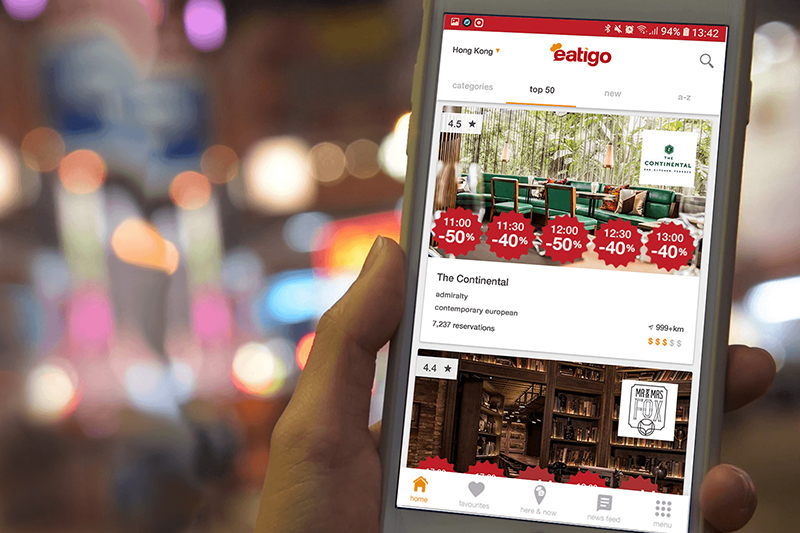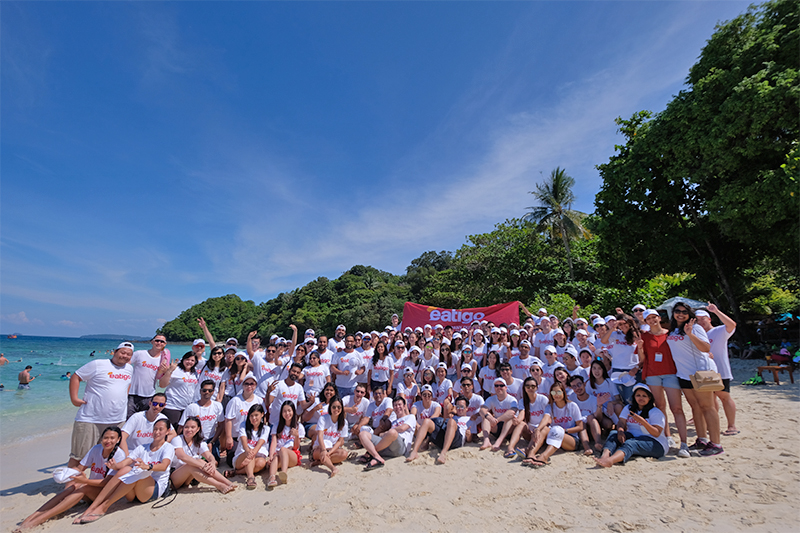The country manager of Eatigo Hong Kong shares what he’s discovered about Hong Kong’s food culture, how Eatigo has managed to succeed amid fierce competition, and his tips for getting the most out of the app.
In January 2017, when Jakob Kronbichler first started setting up Eatigo in Hong Kong, it was just him and one other sales representative, asking restaurants whether they would like to join their platform. Just one and a half years after launch, Eatigo’s presence here is undeniable, with more than 600,000 Hongkongers having downloaded the app, and more than 700 restaurants around the city providing time-based discounts via it each and every day.

Of course, Jakob wasn’t alone when he began organising the launch of Eatigo Hong Kong. Eatigo, a restaurant reservation platform founded in 2013, had already flourished in its hometown of Bangkok, Thailand, and successfully expanded to Singapore, Malaysia and the Philippines after funding from tourism giant Tripadvisor. Their marketing slogan: ‘Up to 50% off at every restaurant, every day,’ has captured the hearts and stomachs of customers around Asia, as well as helped partnering restaurants increase their revenue.
But, how exactly does it all work? The answer is to be found in yield management, a tried and true pricing strategy first utilised in the airline industry by American Airlines, before spreading to the hospitality industry, and now, the restaurant industry. It works by varying prices according to demand to maximise revenue: prices are higher when there is more demand, think airfares on long weekends, and they go down when demand is low, like drinks during happy hour. For restaurants, demand is usually high during peak hours, when everyone gets their lunch breaks or finished work but can be almost negligible outside these times. Since the cost of operating a restaurant, including everything from staff to electricity to rent, remains fixed, it makes sense for restaurants to try to fill those empty seats in order to maximise revenue.
This is where Eatigo comes in. The first to pioneer a structured approach to yield management in the restaurant industry, restaurants on Eatigo offer discounts to patrons during their off-peak hours to incentivise more people to come. Per Eatigo’s regulations, they have to offer at least 50% off for at least one hour per day, as well as at least 10% off during peak hours. The rest, including how many people they offer the discounts to and when they offer which discount, they can decide for themselves. “What this means as a restaurant, is that you can shape the traffic according to your needs,” says Jakob, “It’s very dynamic. I think that is also what restaurants really, really like, because we provide them with a tool that they can play around with.”

On the customer’s’ side, Eatigo is a no-brainer, especially in Hong Kong, where there is a prominent eating out culture. Jakob has found that, compared to Europe, where he is from, people in Hong Kong go out to restaurants and try out new establishments more frequently, which sets up an ideal market for Eatigo. “When it comes to Hong Kong, whenever I talk to people, everyone is a foodie,” Jakob says, laughing, “And I think there’s one thing that people like as much as food here, sometimes even more, and that’s a good deal. So, the combination of good restaurants and getting good deals, that’s a winner, and that works really well in Hong Kong.”
These deals are precisely what set Eatigo apart from similar services. In Asian regions where eating out is a commonplace activity, people rarely find the need to book in advance. Therefore, if a regular reservation is all an app is offering, it doesn’t necessarily gain traction. Of course, that is not to say that Eatigo isn’t facing some strong competition; Openrice, the biggest restaurant review and discovery platform in Hong Kong, has been foraying into restaurant bookings and food delivery in recent years, and Jakob considers them Eatigo’s largest competitor. But, due to the two services different focuses, he thinks it is in restaurants’ best interests to use both platforms, “in a complementary strategy.” Clearly, Jakob is confident that Eatigo’s focus on maximising revenue during off-peak hours will allow the app to stand its ground.
Though Eatigo has flourished in Hong Kong, (the platform broke even in the city in under six months), Jakob’s aspirations don’t stop here. His grand vision? A world where everyone, whenever they want to eat out, regardless of what, when and where they are eating, would check Eatigo before anything else. If Eatigo persists in improving the quality and quantity of restaurants they partner with, to the point where they can cover every appetite and every budget, Jakob says, this goal can be achieved.
As for his advice in getting the best out of Eatigo, Jakob recommends looking out for deals early in the week, Monday to Wednesday, and in the early evening, between 6:00 – 6:30 pm. He also recommends checking out WOW Wednesday, their monthly campaign, where thirty to forty partnering restaurants offer 50% off for the entire day. “Nobody is in our office on those Wednesdays”, he concludes, jokingly.
Hungry for a change?
Maybe we can help you out. Our co-working spaces at the Hive Lai Chi Kok offer a professional network of innovators, creatives and entrepreneurs that span across the Asia-Pacific. Just email us at [email protected] for more details.
Related Articles
Through the Lens: Portraits of Hong Kong’s Unsung Heroes
The Best Coworking Spaces in Hong Kong
Hong Kong Restaurant Guide: 67 Best Restaurants You Have to Try




